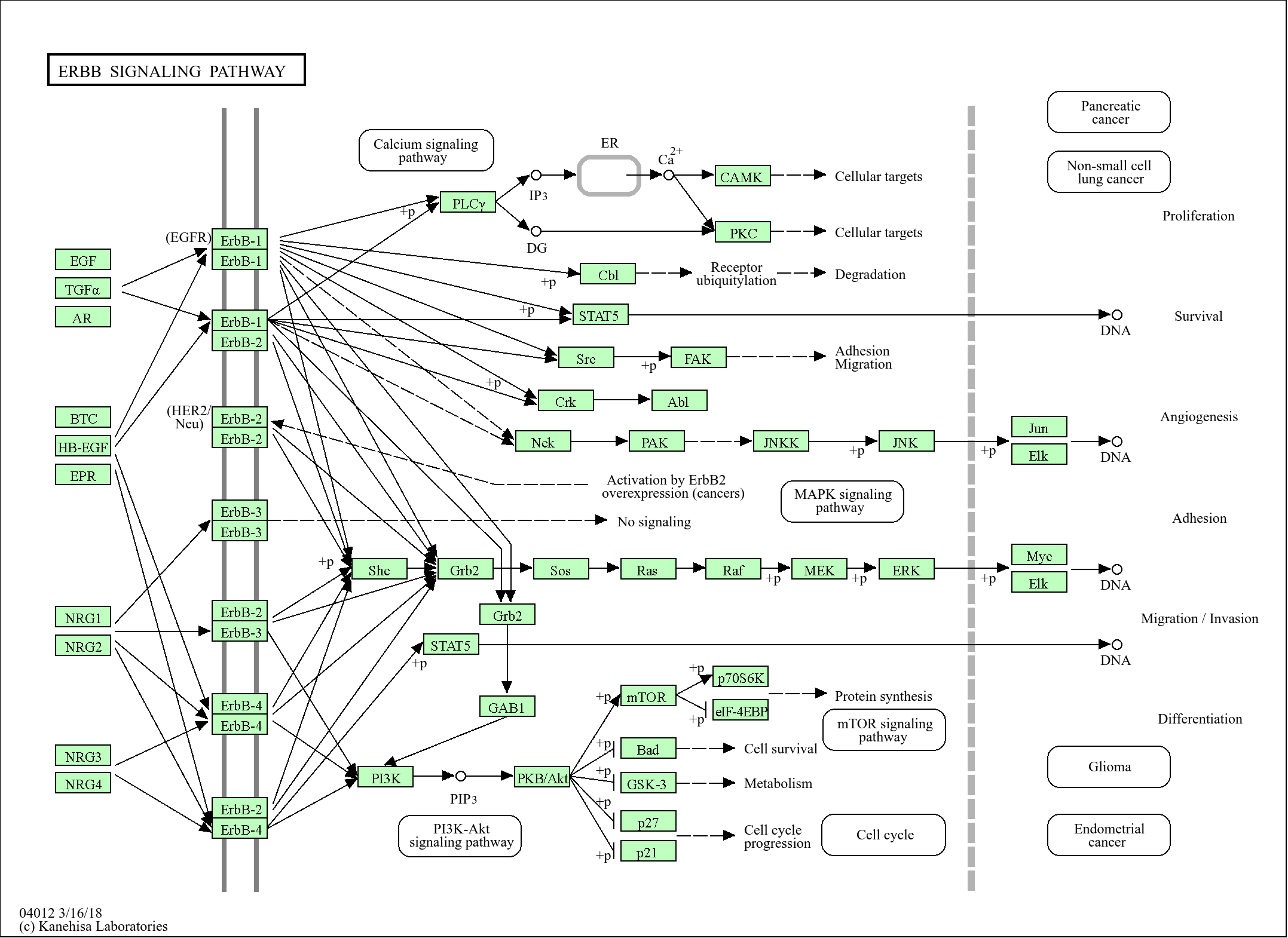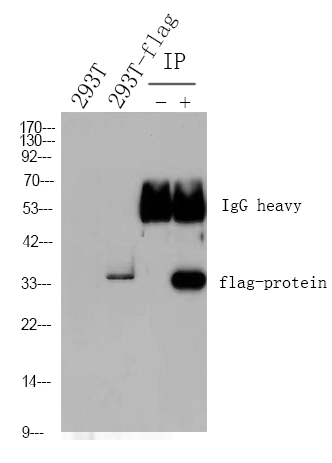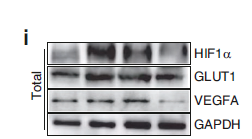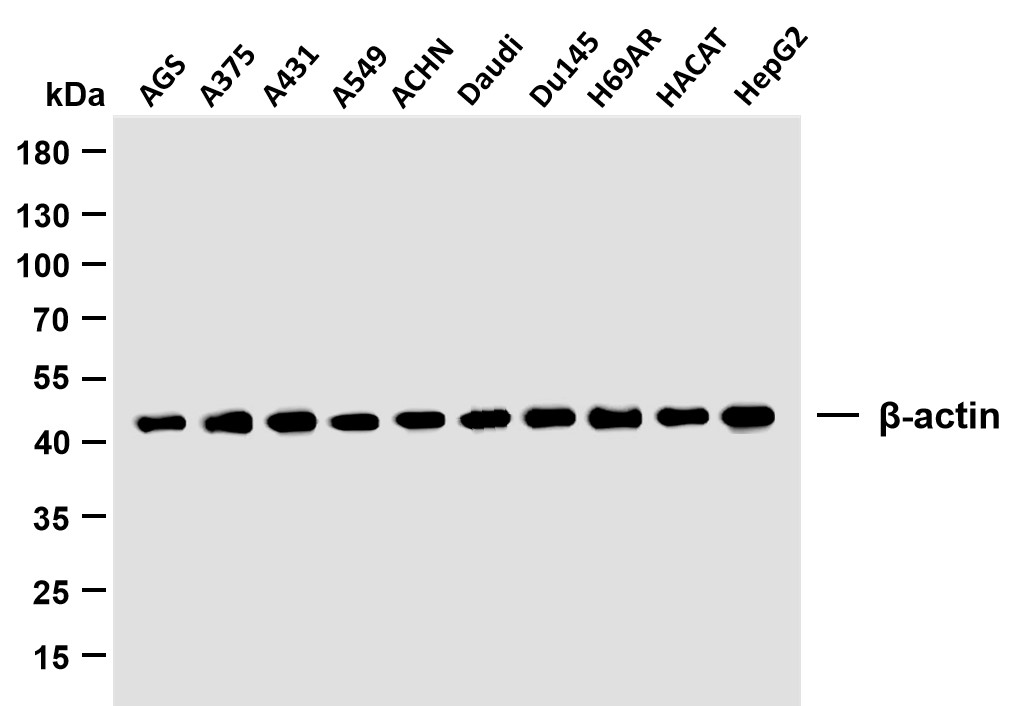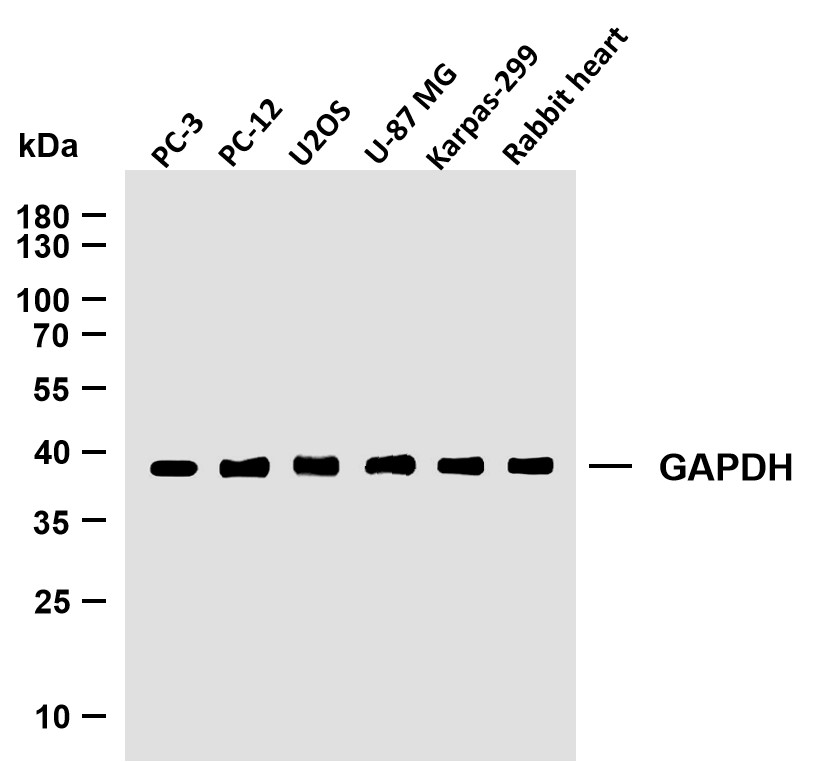
Catalog: YM9023
Size
Price
Status
Qty.
200μL
$600.00
3 weeks
0
100μL
$340.00
3 weeks
0
40μL
$190.00
3 weeks
0
Add to cart


Collected


Collect
Main Information
Target
NFAT1
Host Species
Rabbit
Reactivity
Human
Applications
WB, IHC, IF, ELISA
MW
100kD (Calculated)
140kD (Observed)
Conjugate/Modification
Unmodified
Detailed Information
Recommended Dilution Ratio
IHC 1:100-1:500; WB 1:2000-1:10000; IF 1:200-1:1000; ELISA 1:5000-1:20000;
Formulation
PBS, 50% glycerol, 0.05% Proclin 300, 0.05%BSA
Specificity
Endogenous
Purification
Protein A
Storage
-15°C to -25°C/1 year(Do not lower than -25°C)
MW(Calculated)
100kD
MW(Observed)
140kD
Modification
Unmodified
Clonality
Monoclonal
Clone Number
PT1174R
Isotype
IgG,Kappa
Related Products
Antigen&Target Information
Specificity:
Endogenous
show all
Gene Name:
NFATC2 NFAT1 NFATP
show all
Protein Name:
Nuclear factor of activated T-cells, cytoplasmic 2 (NF-ATc2) (NFATc2) (NFAT pre-existing subunit) (NF-ATp) (T-cell transcription factor NFAT1)
show all
Other Name:
Nuclear factor of activated T-cells, cytoplasmic 2 ;
NF-ATc2 ;
NFATc2 ;
NFAT pre-existing subunit ;
NF-ATp ;
T-cell transcription factor NFAT1 ;
NF-ATc2 ;
NFATc2 ;
NFAT pre-existing subunit ;
NF-ATp ;
T-cell transcription factor NFAT1 ;
show all
Background:
This gene is a member of the nuclear factor of activated T cells (NFAT) family. The product of this gene is a DNA-binding protein with a REL-homology region (RHR) and an NFAT-homology region (NHR). This protein is present in the cytosol and only translocates to the nucleus upon T cell receptor (TCR) stimulation, where it becomes a member of the nuclear factors of activated T cells transcription complex. This complex plays a central role in inducing gene transcription during the immune response. Alternate transcriptional splice variants encoding different isoforms have been characterized. [provided by RefSeq, Apr 2012],
show all
Function:
Alternative products:Additional isoforms seem to exist,Domain:Rel Similarity Domain (RSD) allows DNA-binding and cooperative interactions with AP1 factors.,Function:Plays a role in the inducible expression of cytokine genes in T-cells, especially in the induction of the IL-2, IL-3, IL-4, TNF-alpha or GM-CSF.,induction:Inducibly expressed in T-lymphocytes upon activation of the T-cell receptor (TCR) complex. Induced after co-addition of phorbol 12-myristate 13-acetate (PMA) and ionomycin.,PTM:In resting cells, phosphorylated by NFATC-kinase on at least 18 sites in the 99-363 region. Upon cell stimulation, all these sites except Ser-243 are dephosphorylated by calcineurin. Dephosphorylation induces a conformational change that simultaneously exposes an NLS and masks an NES, which results in nuclear localization. Simultaneously, Ser-53 or Ser-56 is phosphorylated; which is required for full transcriptional activity.,similarity:Contains 1 RHD (Rel-like) domain.,subcellular location:Cytoplasmic for the phosphorylated form and nuclear after activation that is controlled by calcineurin-mediated dephosphorylation. Rapid nuclear exit of NFATC is thought to be one mechanism by which cells distinguish between sustained and transient calcium signals. The subcellular localization of NFATC plays a key role in the regulation of gene transcription.,subunit:Member of the multicomponent NFATC transcription complex that consists of at least two components, a pre-existing cytoplasmic component NFATC2 and an inducible nuclear component NFATC1. Other members such as NFATC4, NFATC3 or members of the activating protein-1 family, MAF, GATA4 and Cbp/p300 can also bind the complex. The phosphorylated form specifically interacts with XPO1; which mediates nuclear export. NFATC proteins bind to DNA as monomers. Interacts with NFATC2IP.,tissue specificity:Expressed in thymus, spleen, heart, testis, brain, placenta, muscle and pancreas.,
show all
Cellular Localization:
Cytoplasm. Nucleus. Cytoplasmic for the phosphorylated form and nuclear after activation that is controlled by calcineurin-mediated dephosphorylation. Rapid nuclear exit of NFATC is thought to be one mechanism by which cells distinguish between sustained and transient calcium signals. The subcellular localization of NFATC plays a key role in the regulation of gene transcription.
show all
Tissue Expression:
Expressed in thymus, spleen, heart, testis, brain, placenta, muscle and pancreas. Isoform 1 is highly expressed in the small intestine, heart, testis, prostate, thymus, placenta and thyroid. Isoform 3 is highly expressed in stomach, uterus, placenta, trachea and thyroid.
show all
Research Areas:
>>cGMP-PKG signaling pathway ;
>>Cellular senescence ;
>>Wnt signaling pathway ;
>>Axon guidance ;
>>VEGF signaling pathway ;
>>Osteoclast differentiation ;
>>C-type lectin receptor signaling pathway ;
>>Natural killer cell mediated cytotoxicity ;
>>Th1 and Th2 cell differentiation ;
>>Th17 cell differentiation ;
>>T cell receptor signaling pathway ;
>>B cell receptor signaling pathway ;
>>Oxytocin signaling pathway ;
>>Yersinia infection ;
>>Hepatitis B ;
>>Human cytomegalovirus infection ;
>>Human T-cell leukemia virus 1 infection ;
>>Kaposi sarcoma-associated herpesvirus infection ;
>>Human immunodeficiency virus 1 infection ;
>>PD-L1 expression and PD-1 checkpoint pathway in cancer ;
>>Lipid and atherosclerosis
>>Cellular senescence ;
>>Wnt signaling pathway ;
>>Axon guidance ;
>>VEGF signaling pathway ;
>>Osteoclast differentiation ;
>>C-type lectin receptor signaling pathway ;
>>Natural killer cell mediated cytotoxicity ;
>>Th1 and Th2 cell differentiation ;
>>Th17 cell differentiation ;
>>T cell receptor signaling pathway ;
>>B cell receptor signaling pathway ;
>>Oxytocin signaling pathway ;
>>Yersinia infection ;
>>Hepatitis B ;
>>Human cytomegalovirus infection ;
>>Human T-cell leukemia virus 1 infection ;
>>Kaposi sarcoma-associated herpesvirus infection ;
>>Human immunodeficiency virus 1 infection ;
>>PD-L1 expression and PD-1 checkpoint pathway in cancer ;
>>Lipid and atherosclerosis
show all
Signaling Pathway
Cellular Processes >> Cell growth and death >> Cellular senescence
Organismal Systems >> Immune system >> Natural killer cell mediated cytotoxicity
Organismal Systems >> Immune system >> T cell receptor signaling pathway
Organismal Systems >> Immune system >> Th1 and Th2 cell differentiation
Organismal Systems >> Immune system >> Th17 cell differentiation
Organismal Systems >> Immune system >> B cell receptor signaling pathway
Organismal Systems >> Endocrine system >> Oxytocin signaling pathway
Organismal Systems >> Development and regeneration >> Osteoclast differentiation
Human Diseases >> Cancer: overview >> PD-L1 expression and PD-1 checkpoint pathway in cancer
Environmental Information Processing >> Signal transduction >> Wnt signaling pathway
Environmental Information Processing >> Signal transduction >> VEGF signaling pathway
Environmental Information Processing >> Signal transduction >> Calcium signaling pathway
Environmental Information Processing >> Signal transduction >> cGMP-PKG signaling pathway
Reference Citation({{totalcount}})
Catalog: YM9023
Size
Price
Status
Qty.
200μL
$600.00
3 weeks
0
100μL
$340.00
3 weeks
0
40μL
$190.00
3 weeks
0
Add to cart


Collected


Collect
Recently Viewed Products
Clear allPRODUCTS
CUSTOMIZED
ABOUT US
Toggle night Mode
{{pinfoXq.title || ''}}
Catalog: {{pinfoXq.catalog || ''}}
Filter:
All
{{item.name}}
{{pinfo.title}}
-{{pinfo.catalog}}
Main Information
Target
{{pinfo.target}}
Reactivity
{{pinfo.react}}
Applications
{{pinfo.applicat}}
Conjugate/Modification
{{pinfo.coupling}}/{{pinfo.modific}}
MW (kDa)
{{pinfo.mwcalc}}
Host Species
{{pinfo.hostspec}}
Isotype
{{pinfo.isotype}}
Product {{index}}/{{pcount}}
Prev
Next
{{pvTitle}}
Scroll wheel zooms the picture
{{pvDescr}}

